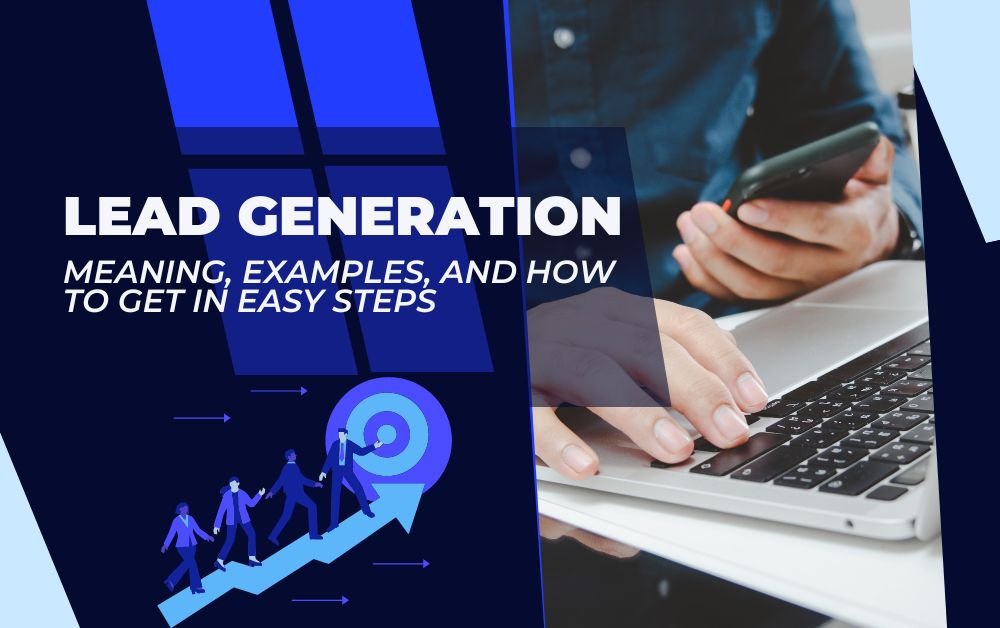Introduction to Lead Generation
Lead generation is a vital part of business growth, especially in today’s digital landscape. Whether you’re running a small business or managing a large corporation, generating quality leads is essential for increasing revenue, attracting potential customers, and fostering long-term relationships. But what exactly is lead generation? How does it work, and how can you implement it in your business strategy in easy steps? This blog will break it down in simple terms and give you actionable tips to start generating leads effectively.
What is Lead Generation?
Lead generation is the process of identifying and attracting potential customers—commonly referred to as leads—who have shown interest in your product or service. The ultimate goal of lead generation is to convert these leads into paying customers through various marketing strategies, such as email campaigns, content marketing, and social media engagement.
Lead generation focuses on building a steady flow of prospects who are genuinely interested in your offerings, making it easier to target them for sales. Without a solid lead generation strategy, businesses often struggle to maintain a steady growth rate.
Types of Leads
- Marketing-Qualified Leads (MQLs): These are individuals who have shown interest through marketing efforts such as signing up for newsletters or downloading an eBook.
- Sales-Qualified Leads (SQLs): These leads are further along in the buying process and have a higher likelihood of becoming customers. They may have requested a demo or more detailed product information.
- Product-Qualified Leads (PQLs): This type of lead is specific to companies that offer product trials or freemiums. These leads have already used the product and are more likely to convert to a paid version.
Why is Lead Generation Important?
Lead generation is crucial because it allows businesses to target specific audiences and drive them through the sales funnel. Without qualified leads, sales teams would have to spend an enormous amount of time and resources chasing uninterested individuals. A well-thought-out lead generation strategy helps you:
- Increase Sales: More leads mean more opportunities to convert them into paying customers.
- Build Brand Awareness: The more people engage with your brand, the more recognition you gain.
- Create Long-Term Relationships: Lead nurturing can help build trust, leading to long-term customer relationships.
- Improve ROI: By targeting the right audience, you save on marketing and sales costs.
Lead Generation Examples
To fully understand lead generation, it’s essential to see it in action. Below are a few examples that highlight various lead generation strategies:
1. Content Marketing
Content is king when it comes to attracting potential leads. By offering valuable content like blog posts, whitepapers, or webinars, you can position your business as an expert in your field. For example, a company that sells software can create a series of blog posts that solve common issues their target audience faces. When readers find this content helpful, they are more likely to provide their contact information in exchange for more in-depth resources.
2. Social Media Campaigns
Social media platforms like Facebook, LinkedIn, and Instagram are excellent tools for lead generation. By running targeted ad campaigns, businesses can attract specific audiences based on location, interests, or behaviors. These campaigns often encourage users to sign up for newsletters, attend webinars, or download free resources, thus generating leads.
3. Email Marketing
Email remains one of the most effective methods for nurturing leads. By offering a value-driven lead magnet, such as a free eBook or a discount code, businesses can capture email addresses. Once you have their email, you can continue sending them valuable information and promotional offers, keeping your brand top of mind.
4. Search Engine Optimization (SEO)
Optimizing your website for search engines can naturally attract leads who are actively searching for solutions that your business provides. Creating SEO-optimized blog posts, landing pages, and product descriptions can help improve your website’s ranking on search engines like Google, which increases the chances of attracting qualified leads.
How to Get Leads in Easy Steps
Now that you understand what lead generation is and have seen some examples, let’s explore how you can generate leads in easy steps.
Step 1: Define Your Target Audience
The first step to successful lead generation is understanding who your target audience is. You need to know their demographics, interests, pain points, and buying behaviors. This information helps you tailor your marketing efforts to appeal specifically to them.
- Tip: Create buyer personas that represent your ideal customers. Include details such as age, gender, profession, and challenges they face.
Step 2: Build a High-Converting Landing Page
Your landing page is the first point of contact for many potential leads. It’s essential to make this page as engaging and clear as possible. Use persuasive headlines, engaging visuals, and clear calls to action (CTAs) to encourage visitors to take the next step.
- Tip: Keep your forms short. Asking for just the essentials (like name and email) will encourage more sign-ups.
Step 3: Offer Something Valuable
Why should someone give you their contact information? The answer lies in offering something of value. Whether it’s a free guide, eBook, discount, or exclusive content, people are more likely to provide their details when they see immediate value.
- Tip: Your offer should solve a problem or fulfill a need your target audience has.
Step 4: Use Social Proof
People are more likely to trust your business if they see others benefiting from your products or services. Incorporating testimonials, reviews, or case studies on your website or landing pages can significantly boost lead generation.
- Tip: Include real customer success stories to build credibility and trust.
Step 5: Leverage Social Media
Social media isn’t just for building brand awareness—it’s also a powerful tool for lead generation. Share your blog posts, promotions, and free offers on platforms like LinkedIn, Facebook, and Instagram to reach a broader audience. Use paid ads for even more targeted reach.
- Tip: Use a mix of organic posts and paid ads for maximum engagement and lead generation.
Step 6: Run Paid Ads
Paid ads on platforms like Google, Facebook, or Instagram can help you target specific audiences based on demographics, interests, and behaviors. These ads typically include CTAs that encourage users to sign up for something of value, such as a newsletter or free trial.
- Tip: A/B test your ads to see which messaging or design resonates best with your audience.
Step 7: Follow Up and Nurture Your Leads
Once you’ve captured your leads, it’s essential to nurture them. Not all leads will be ready to purchase immediately, so it’s crucial to maintain communication through email marketing, newsletters, or even retargeting ads. This keeps your business top of mind and increases the chances of conversion.
- Tip: Create a series of automated emails to guide leads through the buying process.
Conclusion
Lead generation is an essential component of any business growth strategy. By defining your target audience, offering value, and leveraging tools like content marketing, social media, and paid ads, you can generate quality leads that convert into loyal customers. Remember, the key is to continually test and optimize your strategies to find what works best for your specific audience.
By following these easy steps, you can start seeing a steady flow of leads, helping your business grow and succeed.
With these actionable insights and strategies, you are now better equipped to generate leads effectively and grow your business. Lead generation doesn’t have to be complicated; with the right approach, you can build a system that consistently attracts and converts your ideal customers.



